The single most important goal for any swordsman is not killing his opponent. It is To survive him (or herself).
Thus, given the choice of what piece of equipment you should choose if you could only get one. You would probably be better of choosing a shield instead of a sword, that is, if you are not in a one on one situation.
As I have mentioned earlier I practice Historical European Martial Arts. It is the investigation and practice of the matial arts that was practiced in the middle ages and the renaissance in Europe. One of the disciplines is the sword and buckler combo.
A buckler is a small shield which is not strapped to the arm but rather held in the hand. It was used by civilians and warriors alike from the early middle-ages and far into the late rennaisance. It could be made of wood, leather, metal or any combination of these. it is closely related to the viking shield(it is actually almost identical to a vikingshield, except much smaller). Since it is lighter and more handy than a real shield, it could be worn hanging from the belt with little or no discomfort , and its only disadvantage compared to a large shield is that it does not protect very well from projectile weapons.
I decided to make my own buckler when I started practicing sword and buckler a little over 2 years ago. I went for an all steel construction, since (A) the wooden ones at our club was pretty chewed up so I decided the metal was the more durable solution and (B) I work mostly in metal and didnt have any appropriate wood lying around.
Since then I have made several bucklers both in wood and steel and its a neat project if you want to get into armour making since its not that hard to make and wont cost too much.
Themost complicated part and the part that takes most of the time is the boss. Yeah thats what its called, its also sometimes called an Umbo. its the rounded part that covers your hand and its quite important for several reasons. First it makes sure the balance of the buckler is in the middle of your hand instead of in front of it, and second it is great for catching an opponents blade in the depression between the flat of the buckler and the boss.
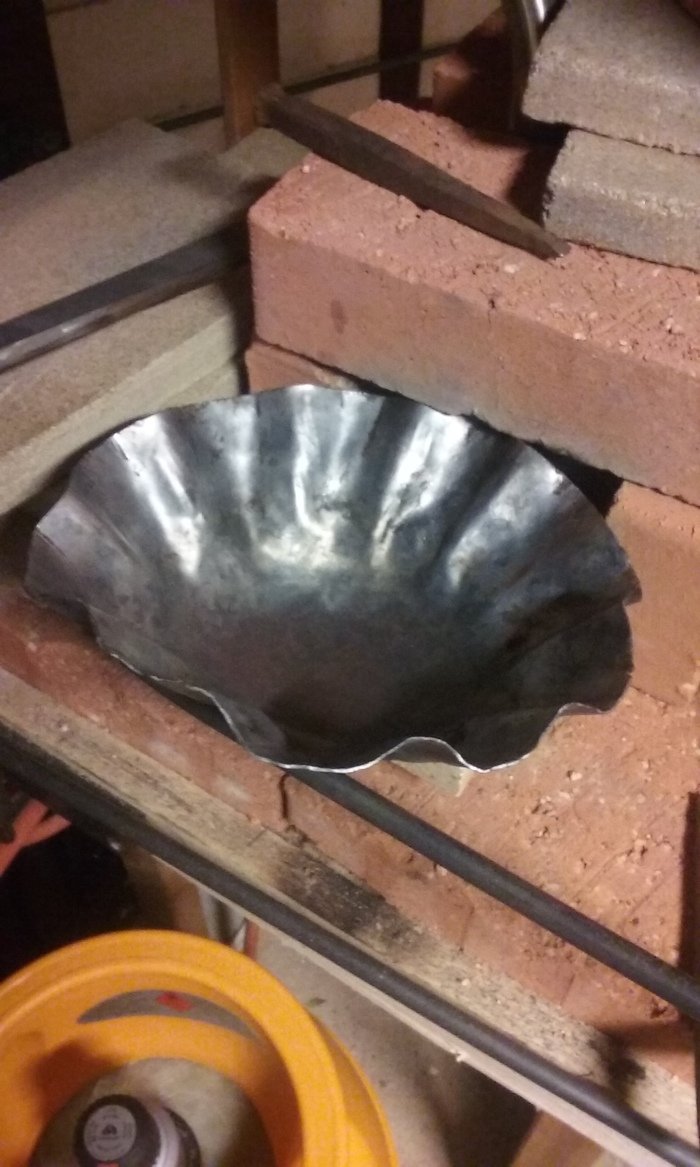
The process of rounding a flat steel sheat is calling raising, and its easy as long as you have a very shallow bowl. Unfortunately we need a rather deep bowl for a shield boss. I am not an armourer. My experience with working with metal comes from equal parts selftaught and an education as goldsmith, so I used what I had learned from raising silverware, and started by folding in the rim. I have later learned that when working with steel thats not the way its usually done but it worked out just fine. After the folding I hammered the edge back in and this was repeated 2-4 times (I cant remember exactly)
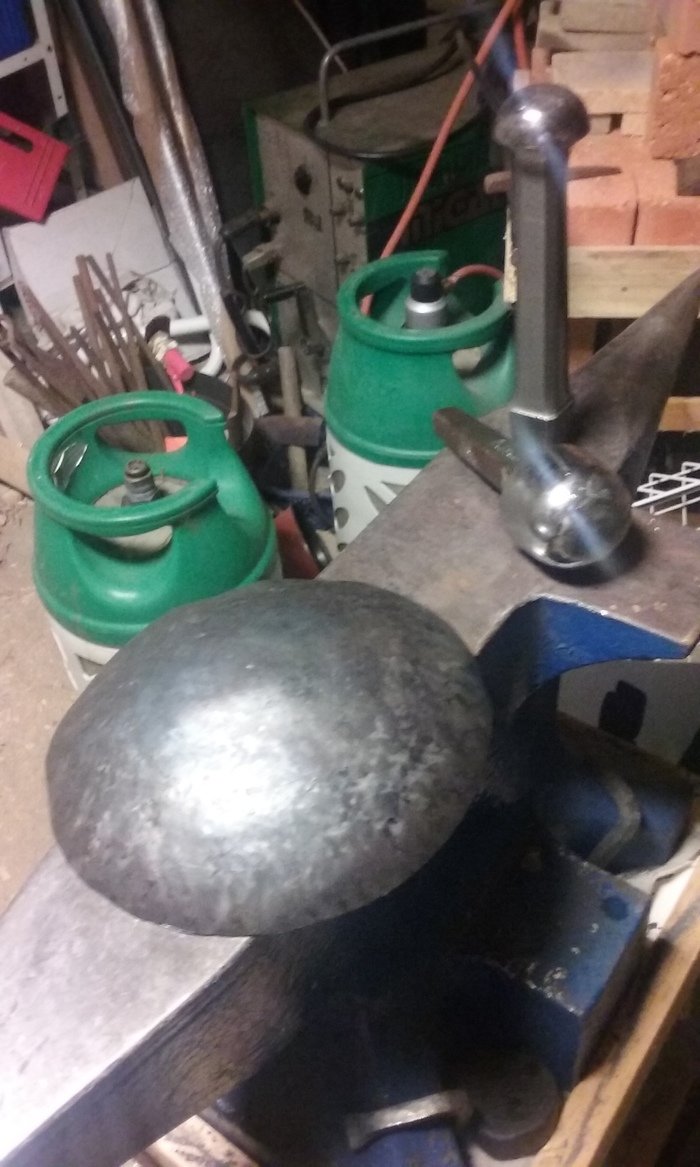
Here You can see it after one iteration of folding and "flattening". You can also see the stakes that I use for rounding the metal
One thing about working in platesteel is that you do not need to work it hot. Any other smithingwork is always done on at least red-hot steel but plate work can be done either hot or cold. You just need to make sure that you anneal the steel often, that is, heat it to a red colour and let it cool slowly. This releases the built up stress in the metal and prevent it from cracking.
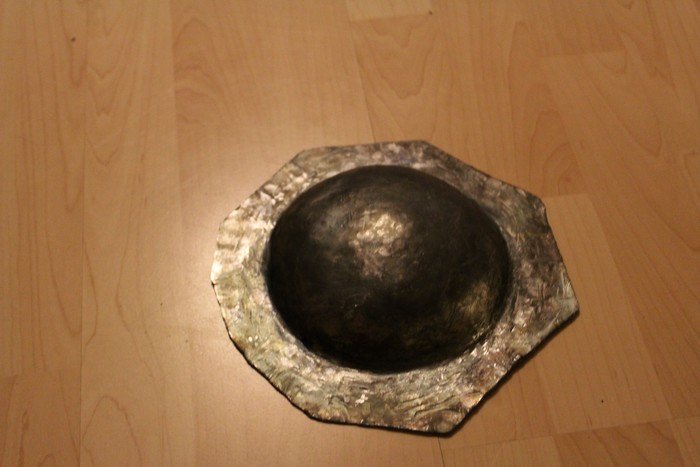
Once I was satisfied with the curvature I turned the piece over and flattened the rim again.
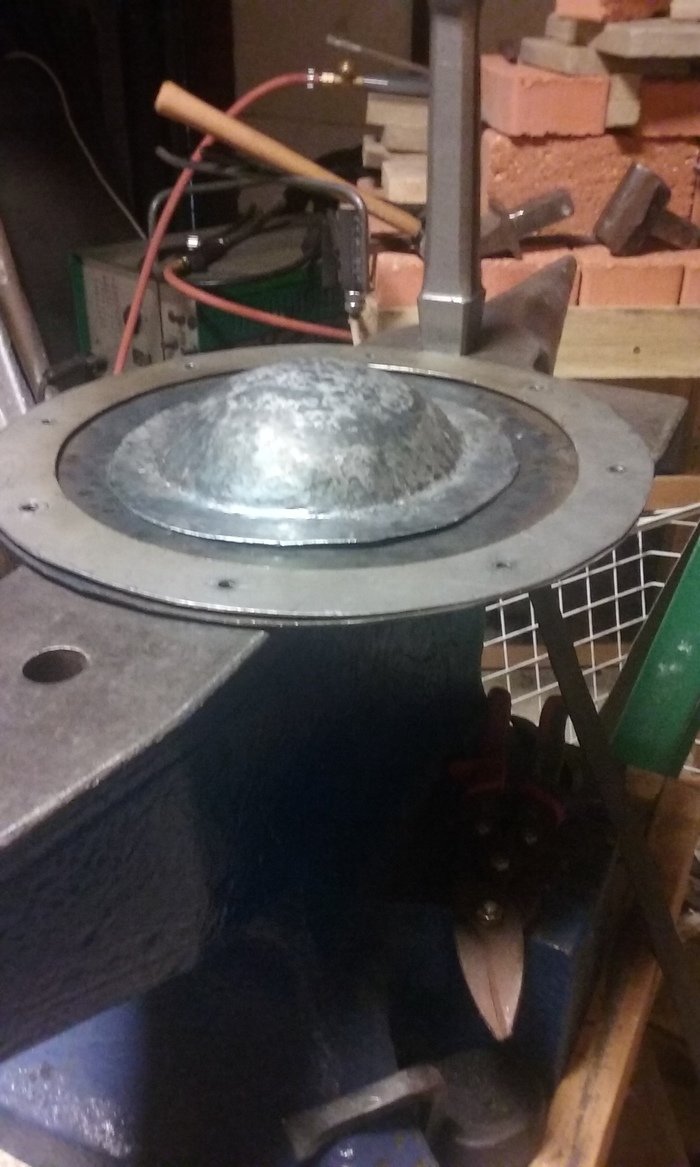
Then unto fitting the plates to the boss. I had cut out a circular piece with a hole in it but i was not entirely satisfied with the rigidity of the construction, I had used 1.5mm plate and it was perhaps a little thin, so I made a sandwich approach, with a rim laid on top, and then I hammered the bottomplates rim in over the other. This helped the rigidity alot, actually more than was needed, so I ended up removing much of it again, to bring down the weight.
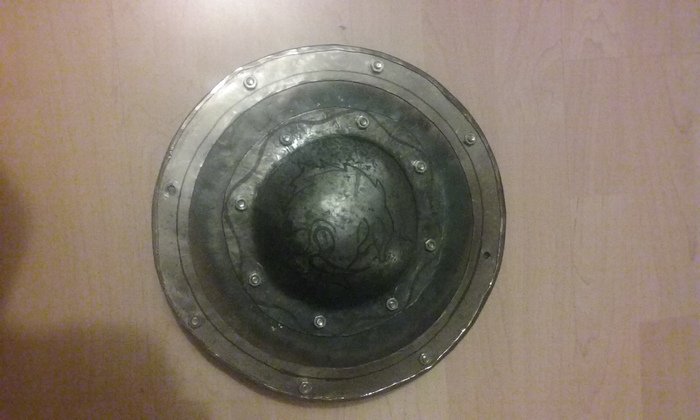
Since this was to be my personal training buckler and just because I can. I decided to give it a little extra. Thus I drew a hoghead on the boss of the shield and then did a simple embossing. I have done quite some embossing in copper and silver. Steel is something completely else. It fights you all the way, but I managed to get a decent and recognizable design on it.
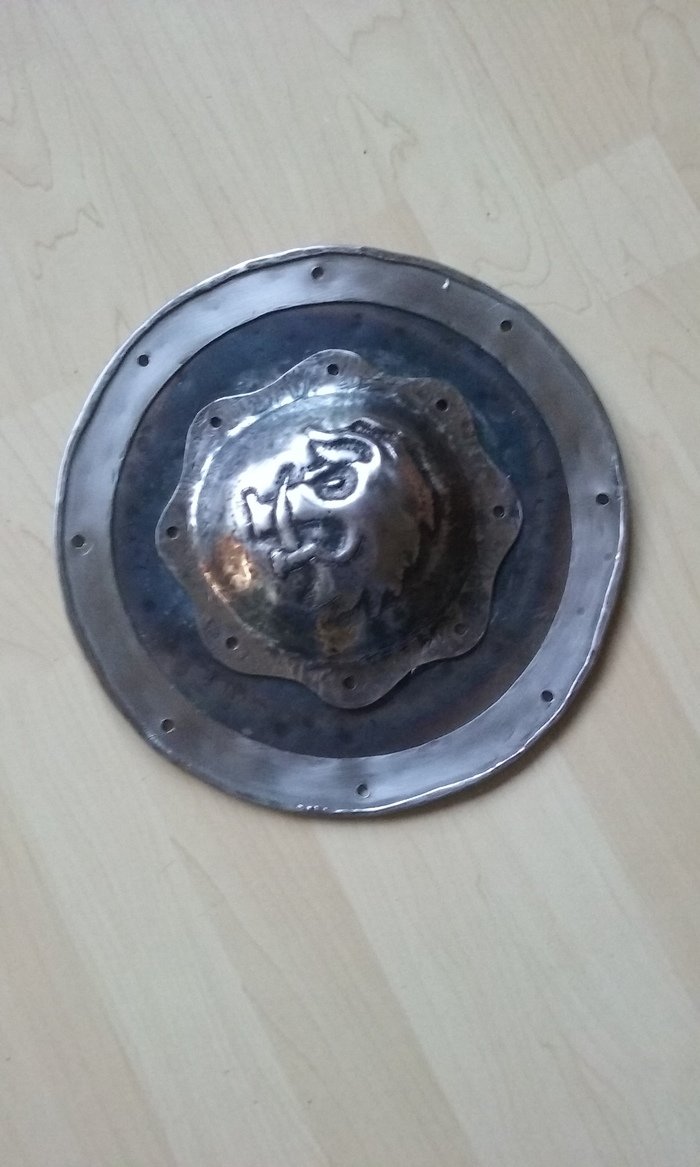
Then it needed a handle and some rivetting. I made the rivets myself from short rods of mild steel that I heated and hammered in one end to create a mushroom shape. I then inserted the narrow end through the holes in the plates and hammered again to lock it in place. Rivetting is one of the most satisfying thing you can do, especially if they dont bend or becomes crooked. I did have to remove a couple of them and start over due to this, but its just a matter of practice.
The handle on this Buckler(its the one in the top right corner) was made of steel covered in a leftover piece of the Zebrano wood i used for my sons knife, from this previous post. The handle was riveted on with the same rivets that held the boss to the buckler. and the wood was carefully fitted and glued on with epoxy. That concluded the construction. I finished it by painting the flat part red, to fit with my fencing jacket and trousers. Its been used for more than a year approximately once a week for heavy sparring and training and it holds out very nicely the top image is actually taken after a little less than a year of use.
Let me know what you think, and feel free to follow if you found this interesting. I do all manner of projects.
Suggestions for what I should make next is also very welcome in the comments.
The making of a fencing shield. A detailed tutorial
4 Comments
